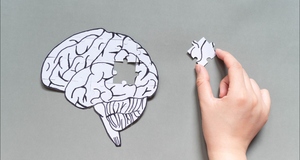Research NoteThe Influence of Gender on Long-Term Incidental Memory
By
2014, Vol. 6 No. 05 | pg. 1/3 | »
IN THIS ARTICLE
KEYWORDS
A baby is born, and almost instantaneously, assigned to a life of stereotypical gender identity. The female is described as a “precious baby girl” and is given a little pink hat and wrapped in a pink blanket. The male is a “strong and healthy boy” and adorned in blue. Many children will spend their lives exposed to basic gender stereotypes. The girl “should” play with dolls and play pretend house. The boy “should” like sports, play with fire trucks and weapons. By the time the child has grown up and gone through schooling, gender typical stereotypes are engrained within them, even if they personally do not submit to the stereotypes (i.e., most people “know” women wear lipstick and high heels and men like cars and watch football). Such gender-stereotypical images are so embedded within society that the stereotypical exposure even influences everyday life (e.g., men fixing things and women grocery shopping). Given the prevalence of gender stereotypical information, this article examines how gender effects the information individuals unintentionally retain in their short term memory. Individuals are exposed to gender stereotypes not only in daily interactions, but from mediums that pervade every society. Children’s books, for example, have an overwhelming predisposition to include gender-stereotypic material. This content can be influential as the children reading these books develop a sense of self (Taylor, 2009). While reading books and receiving external messages from a social point of view (e.g., women are nurses and men are doctors), children learn what it means to be a certain gender and in a stereotypical manner (Taylor, 2009). These implications of gender can be pervasive throughout an individual’s lifetime. Gender stereotyping impacts many aspects of life. Good, Woodzicka, and Wingfield (2010) examined how stereotypes influenced performance in school. Freshman and sophomore high school students, age 13 to 17, were exposed to gender-stereotypical and counter-stereotypical images added to excerpts from their science textbooks (Good et al., 2010). Good et al. (2010) found that when females saw images of female scientists (counter-stereotypical) in their science books, they performed at a higher level than when using the same science textbook with male-stereotypical images. There was a corresponding finding for males viewing images of male scientists (Good et al., 2010). Simply viewing stereotypical and atypical photos in a science text changed how students of each gender performed with regard to the material contained therein.Few differences are found in basic memory abilities between genders (Herrmann, Crawford, & Holdsworth, 1992), however, gender stereotypes do affect memory as Herrmann et al. (1992) showed in a study utilizing shopping lists. Hermann et al. (1992) had 48 undergraduate participants, age 18 to 23, intentionally remember shopping lists with specific titles (e.g., Groceries or Hardware Store) as the only difference. Females recalled more items from the grocery list and males recalled more items from the hardware list (Herrmann et al., 1992). Although female and male memory appears similar, researchers have identified and continue to investigate differences that exist between the two. Signorella, Bigler, and Liben (1997) researched children’s memory in relation to their gender. A meta-analysis of memory research indicated children’s gender schemas showed a gender-congruent bias in delayed memory (Signorella et al., 1997). Liben and Signorella (1980) also found first and second grade children’s attitudes informed their memories. Liben and Signorella (1980) tested recognition memory with pictures of female and male individuals in stereotypical and atypical occupations. Liben and Signorella (1980) measured each participant for gender-stereotyped attitudes utilizing a previously published measure adapted for the purposes of their study. The measure indicated what each child believed only males could do, only females could do, and what both genders could do (Liben & Signorella, 1980). Children were shown pictures of individuals in gender-traditional, gender-nontraditional, and gender-neutral occupations and were later asked to identify which images had been seen previously (Liben & Signorella, 1980). Children who scored higher on gender stereotyping recognized more gender-traditional pictures than non-traditional (Liben & Signorella, 1980). Gender related memory appeared higher in the children who hold more gender stereotypical beliefs. Humans have multiple ways of processing information and categorizing perceptions. One way is through the use of heuristics (i.e., rules of thumb) to categorize information for storage (Cherney, 2005). Individuals often use a type of heuristic called a schema (Bem, 1981). Bem (1981) explains schemas as a memory tool individuals use to better assign meaning to particular information. A person with a particular gender schema processes and codes information congruent with sex and gender related information (Bem, 1981). As Valian (2005) discussed, the human mind categorizes information for ease of recall. Schematic categories are the first steps to organizing memories. To avoid overload and in attempt to minimize categorization difficulties, as few categories as possible are used to accomplish the task at hand (Valian, 2005). Here, Valian (2005) points out individuals are not necessarily sexist when using gender categories to organize and process information, but rather vulnerable to the accessibility of such schemas in memory. Gender schemas are used to help organize information for later recall, as are other gender related processes. Gender stereotypes can help facilitate memory (Wood, Groves, Bruce, Willoughby & Desmarais, 2003). Wood et al. (2003) examined undergraduate memory for the ability to draw upon gender stereotypical information when using an elaborative strategy to remember facts about females and males. Participants were given sentences about an individual, with a specific gender, doing an activity. Participants were, then, asked to elaborate on “why” the actor was doing the activity as way help recall the information later. Wood et al. (2003) found that, for the most part, memory regarding both genders was equal, however, both females and males would elaborate more with gender stereotypical information for the female actors. Research also showed when the stereotypical information helped define facts pertaining to females and males, information was recalled with more accuracy (Wood et al., 2003). Gender stereotypes help categorize information which produces improved recall performance for this information. The brain forms patterns that aid in coding information and memory. These patterns form and link meaning to events and circumstances. In this way, the mind is selective in what is retained (Martinez, 2010). Martinez (2010) found human memory codes information primarily relevant to the individual and new information connects to what is already known. This theory of memory could lead to how stereotypes might aid in connections made during learning and memorization. For example, McKlevie (1981) found memory was linked to participant gender. Undergraduate participants were asked to view a series of different faces and later indicate previously seen faces from a large selection (McKlevie, 1981). Facial recognition studies showed an ease for both females and males to recognize faces congruent with their own gender (McKlevie, 1981). Memory, in a multitude of facets, shows improvement when gender congruent or drawing upon gender schemas and stereotypes. Cherney (2005) found gender schemas influenced instructed memory (i.e., participants informed information would need to be recalled later) quite heavily when studying for recall of gender-stereotyped toys. Incidental memory (i.e., participants not informed information would need to be recalled later) was also affected by gender schemas, as stereotypes are often prompted when using heuristics and processing ambiguous information (Cherney, 2005). Cherney (2005) informed half the participants they would be asked to recall the toys they would soon be shown at a later time (instructed memory) and the other half were not informed they would be asked to recall the toys (incidental memory). Participants used gender schemas to process information and, thus, recalled more gender-congruent than gender-atypical toys (Cherney, 2005). Gender schemas appear to facilitate both female and male memory. Chipman, Kimura, and Fraser (1998) investigated why females outperform males in recall tasks of information they were not specifically instructed to remember. Chipman et al. (1998) found evidence this pattern could be attributed to the verbal aspect of previous studies, as females generally perform better than males on verbal tasks. Cherney and Ryalls (1999) conducted a study to examine the theory females remember more information from their environment than males. Children, age 3 to 6, and adults were shown female- and male-stereotypical toys and objects in a toy room for the children, and an office for the adults, for 2 min. Females and males in each age group recalled more objects congruent with their own gender, but females did not show the hypothesized advantage over males (Cherney & Ryalls, 1999). Females and males show some differences in memory patterns, but both show a tendency for gender-congruent memory in different situations. Wagner (1974) theorized incidental memory comes from development and experiences. For information to be coded into memory at all, the information must be focused and fixated on long enough to code (Castelhano & Henderson, 2005). If objects, events, facts, and information are not properly fixated on, they will not be stored in short-term memory or processed for promotion into long-term memory. Wagner (1974) also discussed incidental memory is selective for what is most relevant to an individual, potentially, including gender. The current study examines the impact of gender on long-term incidental memory. Based on gender schema theories (Bem, 1981; Signorella et al., 1997) and gender-facilitated memory (Herrmann et al., 1992), we predict gender will improve female and male recall of gender-congruent words.Continued on Next Page » Suggested Reading from Inquiries Journal
Inquiries Journal provides undergraduate and graduate students around the world a platform for the wide dissemination of academic work over a range of core disciplines. Representing the work of students from hundreds of institutions around the globe, Inquiries Journal's large database of academic articles is completely free. Learn more | Blog | Submit Latest in Psychology |



















